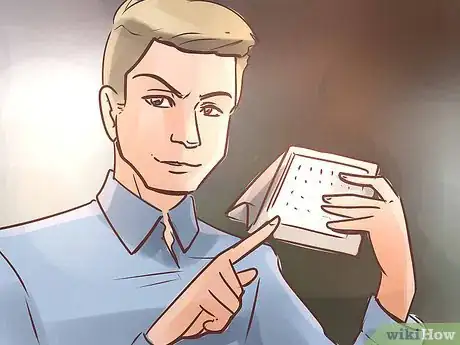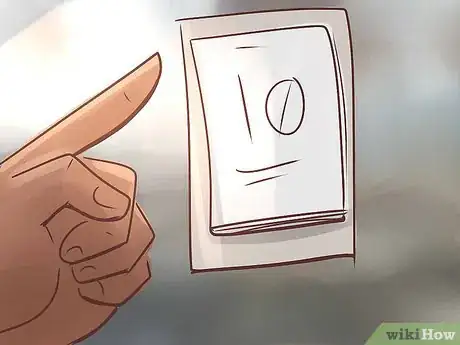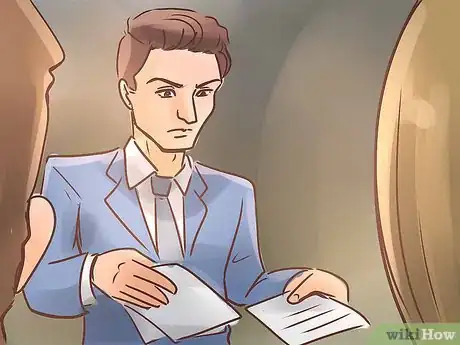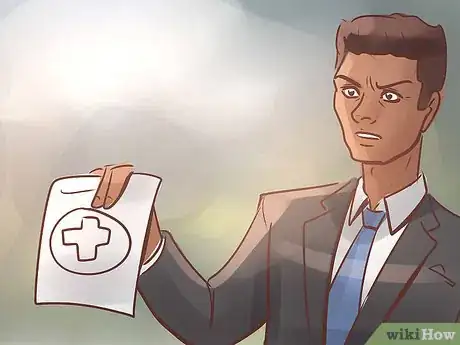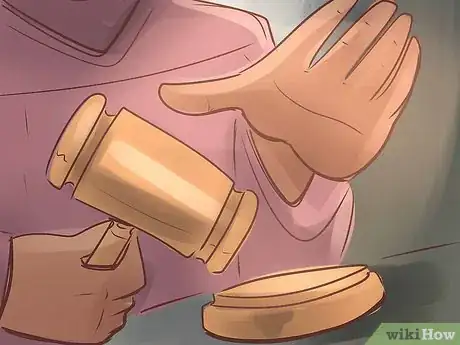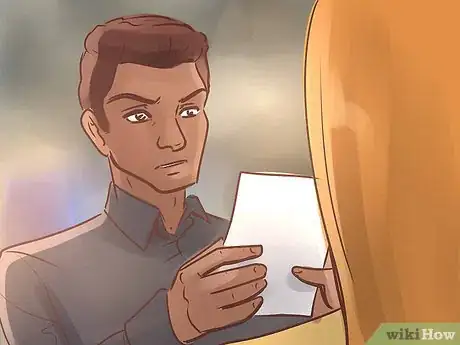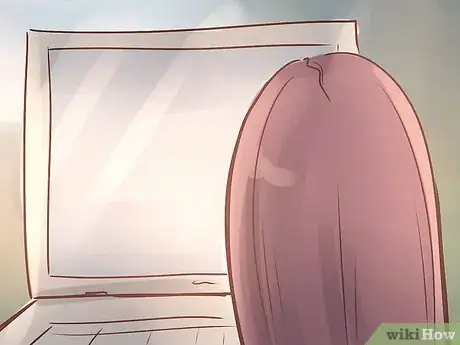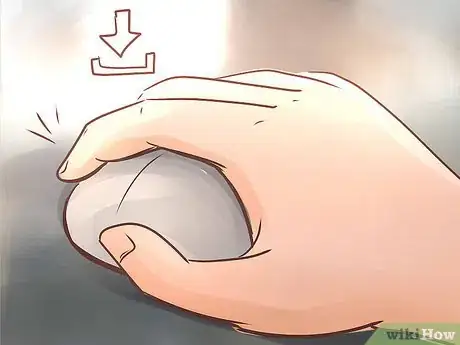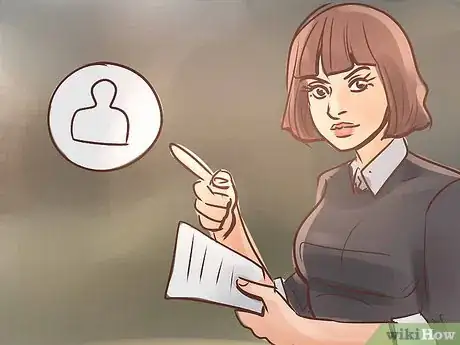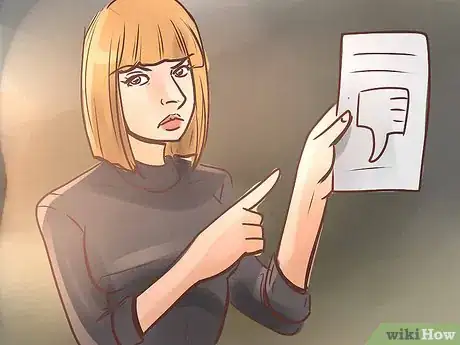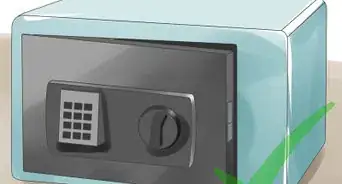This article was co-authored by Clinton M. Sandvick, JD, PhD. Clinton M. Sandvick worked as a civil litigator in California for over 7 years. He received his JD from the University of Wisconsin-Madison in 1998 and his PhD in American History from the University of Oregon in 2013.
There are 7 references cited in this article, which can be found at the bottom of the page.
This article has been viewed 95,872 times.
A power of attorney is a legal document that allows you to appoint a person or entity to make decisions for you or to act on your behalf.[1] A power of attorney may be for medical purposes, such as end-of-life care or decision-making, or it may be for more mundane purposes, like authorizing someone to communicate with the Department of Revenue on your behalf regarding your taxes. The document can take effect immediately after its creation, or you may designate a future time when you can no longer make decisions for yourself. Under Indiana law, a power of attorney is a fairly simple document to create, but it can be very powerful and important if done correctly.
Steps
Creating a Power of Attorney Under Indiana Law
-
1Put it in writing. The first requirement for a valid power of attorney in Indiana is that it must be in writing. You cannot grant this level of authority without a written document. You may wish to consult with an attorney to aid in drafting the power of attorney, although this is not required. No particular legal language is necessary, as long as you include the basic information.[2]
- Use available templates from online sources. If you search online for “Indiana Power of Attorney,” you will find several sources that provide template documents that are legally enforceable in Indiana. If you use one of these forms and fill in the spaces, you will be assured to have a legally-binding power of attorney document.
- In Indiana, if you wish to obtain power of attorney to assist a client, for example, with tax issues, you must use a particular form issued by the Indiana Department of Revenue. That form is available online at www.in.gov/dor.
-
2Identify the agent. The person you are naming to act on your behalf becomes your agent or your attorney-in-fact. Under Indiana law, for a power of attorney to be valid, you must name one or more agents specifically. For example, if you give a power of attorney to your financial adviser to make certain financial decisions for you, that does not include other people in the same brokerage firm.[3]
- You must include the names and addresses of both the principal and the agent or agents. You may create a valid power of attorney using either an agent’s home or business address, whichever is more appropriate.
- The phrase “attorney-in-fact” is different from an attorney who is a lawyer.
Advertisement -
3Define the powers being assigned. You need to state carefully what authority you are giving to your agent. If you draft the power of attorney too generally, you may be giving away rights that you do not intend. For example, if you draft a power of attorney that says, “Manage all my financial affairs,” that would include not only making financial investments but also collecting your weekly paycheck and deciding how to spend the money.[4] A power of attorney can be used to grant one specific function or a collection of functions to the agent you select. Some of the duties that are most commonly assigned through a power of attorney include:[5]
- Manage real estate.
- Conduct your banking transactions.
- Make legal claims and conduct litigation.
- Deal with tax and retirement matters.
- Operate your business.
- Care for you or identified family members on your behalf.
-
4Define the effective starting date of the power of attorney. You need to provide a statement that makes it clear when the power of attorney begins and when, if applicable, you intend it to end. Under Indiana law, these may be specific dates, or they may be events, as long as the events are clearly defined.[6]
- A “springing” power of attorney is one that is not immediately effective. Instead, it becomes effective when some event happens in the future. The most common springing power of attorney occurs with regard to your own health care. You can draft a power of attorney that becomes effective when a doctor certifies that you are mentally or physically incapable of caring for yourself.
-
5Define the endpoint of the power of attorney. A power of attorney will carry whatever rights you allow, for whatever time period you allow. If you do not specify an expiration date, the power of attorney will generally last indefinitely. For example, if you sign a power of attorney that says, “I grant power of attorney to John Smith to manage my business beginning today,” then John Smith will have that authority indefinitely. If this is not what you intend, then you need to provide some other instruction:[7]
- Name an ending date. The clearest way to manage the termination of a power of attorney is to identify specific starting and ending dates. For example, the power of attorney document may say, “This grant of authority expires on December 31, 2018.”
-
6Have the signatures witnessed and notarized. Under Indiana law, the person granting the power of attorney must sign the document. The agent is not required to sign the power of attorney, although doing so is recommended. The signatures must be witnessed and notarized. The notary public will sign and seal the document after verifying the identities of the people signing it.[8]
-
7Revoke the power of attorney at any time. If you grant a general power of attorney and do not specify an expiration date, it will remain effective. However, under Indiana law, you can revoke it at any time. To revoke any general power of attorney, you simply need to notify the agent that you are terminating the grant of authority. You can provide this notice simply orally, although doing it writing is highly recommended. If you wish to revoke a durable power of attorney for medical care, you will need to demonstrate that the mental or physical incapacity no longer exists.[9]
Obtaining Power of Attorney for Medical Concerns
-
1Create a separate power of attorney document for medical issues. Under Indiana law, you must have a separate power of attorney document for medical issues than the one you may use for purely financial or business reasons. You cannot, for example, grant someone authority to manage your business in the same document that you use to grant medical care decision-making.[10]
-
2Create a durable power of attorney for medical issues. A durable power of attorney is one that is intended to last even if the individual becomes mentally or physically incapacitated. Under Indiana law, a durable power of attorney must be in writing, signed and witnessed, and becomes effective when the individual becomes incapacitated. It then lasts for the duration of the individual’s life.[11]
-
3Seek guardianship from a court, if necessary. Though not exactly a power of attorney, guardianship is another form of care that can be put in place for someone who needs assistance. Whereas a power of attorney is a document that the subject can sign while he or she is mentally competent, not everyone has one. As a result, if the person does eventually, through age or accident perhaps, become incapacitated, a power of attorney may not be available. In this case, you would need to go to court and petition for guardianship. This would give you effectively the same authority as a durable power of attorney.
- To seek guardianship, you should either consult with a family law attorney or contact your county probate or family court. The court may have a simple form that you can use to petition. You will need to provide the name of the person involved and be able to demonstrate why you believe a guardianship is necessary.
Selecting an Agent or Representative
-
1Have a family member or close friend to represent you on very personal matters. A power of attorney gives another person whom you will name the power to make certain decisions for you. Some of these may include such intimate issues as health care, medical treatment, and continuing or discontinuing life support. You should select someone with who you have discussed these matters and who you trust to act on your behalf.[12]
-
2Grant power of attorney to a business associate or financial adviser over some business matters. A power of attorney does not have to go to a relative. In fact, you can name anybody you wish to act on your behalf, and you can name specific topics for your representative to handle for you. If you wish, for example, to have someone handle certain business affairs while you may be out of the country, you can do that. In this case, you may wish to name a broker, a financial adviser, or a trusted friend who is knowledgeable.[13]
-
3Grant a power of attorney to a friend or neighbor for some limited purposes. There may be a time when, for example, you want to name a specific event or limited time period for someone to act on your behalf. For example, suppose your minor child is going to travel out of state on a vacation with her best friend’s family. You may want to issue a power of attorney to the friend’s parents to allow them to make medical decisions as needed for your daughter during the vacation.[14]
- In an example like this one, it will be important for you to define the specific purpose and duration of the power of attorney. You do not, for example, want to grant the friend’s parents authority to make all decisions forever for your child.
Executing a Power of Attorney for Tax Purposes
-
1Visit the website for the Indiana Department of Revenue. The Indiana Department of Revenue requires that anyone wishing to grant a power of attorney for tax purposes must use the DOR’s own form. You can access the form at the website of the Indiana Department of Revenue, at www.in.gov/dor. From that page, select “Forms” from the list at the left, and then “Miscellaneous Forms” under the “Individual” heading. You will be redirected to a list of forms. The form you need is the POA-1, “Power of Attorney.”[15]
- If you prefer to have a copy of the form mailed to you, contact the DOR by telephone (317) 232-2240.[16]
-
2Download or print the Indiana POA-1 form. From the list of Miscellaneous Forms, select the POA-1, Power of Attorney. This is designated state form number 49357. When you click on that form, the form will download to your computer in a PDF format.[17]
-
3Complete the Indiana POA-1 form. The POA-1 must be filled in completely, either neatly printed in ink or typed. The completed form will need the following information in order to be accepted and valid:[18]
- The taxpayer’s name and address. If the taxpayer is doing business under a company name, that name should be provided as well.
- The taxpayer’s Indiana taxpayer ID number, employer identification number, or social security number. If one or more of these are available, provide as much information as you have.
- Identification of the appointed representative. You will need the name, address and telephone number of the representative. If you wish to appoint more than one person, you may do so by providing this information for each representative. If you are giving power of attorney to a tax professional, attorney or other professional representative, and you wish to allow the DOR to speak with more than one person at the firm, you will need to name each individual. Naming the firm itself is not sufficient.
- Provide the name and address of the company or firm, if applicable.
-
4Provide the authorization. In items 5 and 6 of the POA-1 form, you have the option of granting a general authorization to have your representative(s) handle all tax-related matters for you (Box 5). Alternatively, you can use Box 6 to name specific tax matters and years for your representative to handle for you.[19]
- Do not check both Box 5 and Box 6. If you do, Box 5 will control and you will be granting full authorization to your representative to handle all tax-related matters for you.
-
5Sign the form. A power of attorney is not valid if you do not sign it. By signing the form, you are affirming that the information on the form is correct and that you are granting the power of attorney freely. Your signature also indicates your affirmation of the following statements:[20]
- ”I acknowledge that the designated representative has the authority to receive confidential information and full power to perform on behalf of the taxpayer in tax matters related to this Power of Attorney. This authority does not include the power to receive refund checks.”
- ”I acknowledge that actions taken by the designated representative are binding, even if the representative is not an attorney. Proceedings cannot later be declared legally defective because the representative was not an attorney.”
- ”If I am a corporate officer, partner, or fiduciary acting on behalf of the taxpayer, I certify that I have authority to execute this Power of Attorney on behalf of the taxpayer.”
-
6Submit the form to the Indiana DOR. The DOR will accept the original POA-1 by mail or a copy of the POA-1 by fax. The DOR will not accept power of attorney forms by email, as email is not considered a secure enough form of transmitting the information.[21]
- Submit the POA-1 by fax to (317) 615-2605.
- Send the original POA-1 by mail to Indiana Department of Revenue, PO Box 7230, Indianapolis, IN 46207-7230.
-
7Renew the POA-1 in five years if desired. The POA-1 will remain valid for five years from the date that it is signed. It will need to be renewed by executing a new form when the five years expires. A completely new form is required, even if none of the information changes.[22]
-
8Revoke the POA-1 by a separate writing. If, before the five year period expires, you wish to give power of attorney to someone different, or you wish to terminate the power of attorney, you must do so in writing. There is no specific form that must be used to cancel a power of attorney. You just need a letter that says, “As of this date, I revoke the power of attorney granted to _______ on a POA-1 that I signed on ____.” Then sign that letter and deliver it to the Department of Revenue in the same manner that you delivered the original POA-1.
- You cannot rescind a power of attorney by merely completing a new POA-1 form. For example, if you complete one POA-1 in January 2015, giving authorization to Attorney John Smith, and then you complete a second POA-1 in July 2015, giving authorization to accountant Bob Jones, then BOTH John Smith and Bob Jones will be authorized to act on your behalf. This can cause confusion if it is not what you intended.
Warnings
- You can revoke your power of attorney at any time. However, you must be mentally competent. When revoking your power of attorney, you must write your wishes out and sign it in front of a notary public. The revocation must be given to the attorney-in-fact and to every entity involved such as the county recorder's office.⧼thumbs_response⧽
References
- ↑ https://www.legalzoom.com/articles/what-is-a-power-of-attorney
- ↑ http://info.legalzoom.com/obtain-power-attorney-indiana-20065.html
- ↑ http://info.legalzoom.com/obtain-power-attorney-indiana-20065.html
- ↑ http://info.legalzoom.com/obtain-power-attorney-indiana-20065.html
- ↑ http://powerofattorney.uslegal.com/frequently-asked-questions-faq/
- ↑ http://info.legalzoom.com/obtain-power-attorney-indiana-20065.html
- ↑ http://info.legalzoom.com/obtain-power-attorney-indiana-20065.html
- ↑ http://info.legalzoom.com/obtain-power-attorney-indiana-20065.html
- ↑ http://statelaws.findlaw.com/indiana-law/indiana-durable-power-of-attorney-laws.html
- ↑ http://info.legalzoom.com/obtain-power-attorney-indiana-20065.html
- ↑ http://statelaws.findlaw.com/indiana-law/indiana-durable-power-of-attorney-laws.html
- ↑ http://statelaws.findlaw.com/indiana-law/indiana-durable-power-of-attorney-laws.html
- ↑ http://info.legalzoom.com/obtain-power-attorney-indiana-20065.html
- ↑ http://files.consumerfinance.gov/f/201310_cfpb_lay_fiduciary_guides_agents.pdf
- ↑ http://www.in.gov/dor/4036.htm
- ↑ http://www.in.gov/dor/3325.htm
- ↑ http://www.in.gov/dor/4036.htm
- ↑ http://www.in.gov/dor/4036.htm
- ↑ http://www.in.gov/dor/4036.htm
- ↑ http://www.in.gov/dor/4036.htm
- ↑ http://www.in.gov/dor/4036.htm
- ↑ http://www.in.gov/dor/4036.htm



